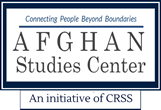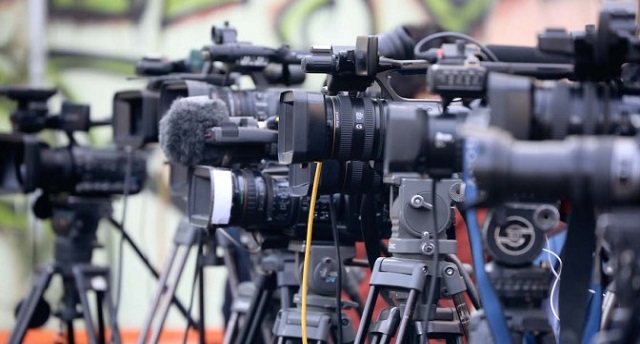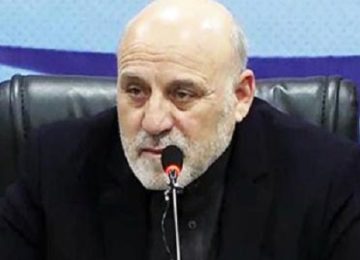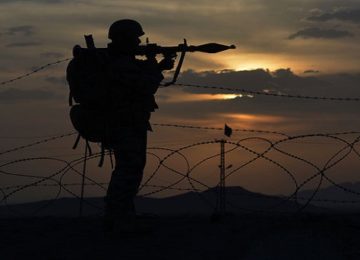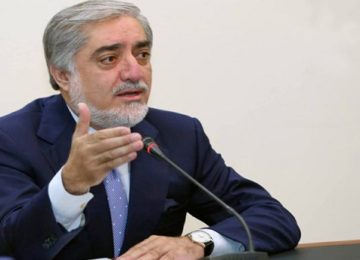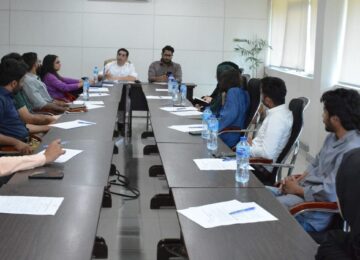THE NEWSREEL DEPICTS SOVIET TANKS winding their way along the Kabul River. It at first appears to be a tranquil scene. But as the path narrows, Afghan rebels launch a surprise attack. Artillery is exchanged. Smoke billows. The camera does not waiver.
The clip featured in a broadcast on CBS in 1987, offering a rare glimpse into the Soviet invasion of Afghanistan. Yet what made the film famous, then infamous, was not its content but the man behind the lens. Mohammed Salam, the video journalist who captured the footage, was part of a controversial US government-funded initiative to arm members of the Afghan mujahideen not with AK47s but with pens and camcorders, in order to document the war.
In 1978, a Communist coup in Afghanistan, and a subsequent Soviet invasion, prompted one of the largest and most sustained covert operations in the CIA’s history. For more than a decade, “Operation Cyclone,” as it was called, pumped billions of dollars in arms and economic assistance to Afghan resistance parties. A lesser-known proxy war was also being waged through the press.
This was not easy. The Soviet-Afghan War is sometimes referred to as “the hidden war” for its inscrutability to foreign journalists; during the height of the conflict, according to one report, fewer than a dozen foreign correspondents could be found in Afghanistan. Mobility was a problem—there were no planes that could parachute correspondents onto bases; no insulated, securitized hotels in the high passes of the Hindu Kush; and Western journalists were sought-after targets. During the Vietnam War, which—with new visual technologies and increased media access—had transformed the way the world saw military operations, people around the world could witness the quagmire of US troops in real time. More than 400 American and European reporters had been in Vietnam; dozens of camera crews were embedded in the field with troops. Now the Soviets were undergoing their own Vietnam and, much to the dismay of US policy makers and Cold War hawks, nobody was watching.
In 1985, to solve this problem, Congress approved a $500,000 grant for the United States Information Agency, a department devoted to “public diplomacy,” to establish a journalism school for Afghan rebels. According to Alvin Snyder, who worked for the agency at the time, arming guerrillas with minicams was a simple, cost-effective way to deliver press attention. “Imagine the pictures they will be able to get!” he wrote in a memo, excerpted in his memoir, Warriors of Disinformation: How Lies, Videotape, and the USIA Won the Cold War (2012). “Imagine the publicity!”
Like much of the USIA’s work, the initiative straddled the delicate and often blurry line between media and propaganda. Boston University’s College of Communication, which ended up receiving the grant, was so divided over the ethics of the project that the dean at the time, Bernard S. Redmont, resigned. (Redmont died in 2017.)
For those who signed on—including Nick Mills, a photographer who was recruited by BU to head the program in Peshawar, and Stephen Olsson, who supervised the video training of the rebels—the grant presented more of an opportunity than a liability. “There was a dearth of news, and I think all of us felt really a professional calling,” Olsson tells CJR. Armed with a verbal guarantee from the USIA that the government would stay out of the editing room, Mills went to Peshawar in 1986 as field director of the project. In 1987, the Afghan Media Resource Center began its work training rebels in the art of reporting.
Haji Daud, who would eventually become the director of the AMRC, was one such rebel journalist. Daud, now 67, is a tall, soft-spoken man, whose life trajectory mirrors that of Afghan media. He knew that he wanted to be a journalist from his early childhood, in the Eastern province of Nangarhar. Nangarhar, today an ISIL base and the focus of retaliatory US airstrikes, was, in his boyhood memories, an idyllic and welcoming place where tourists could walk the streets unbothered. Daud’s father was educated during the first years of Afghan independence and he wanted his eldest son—one of eight children—to be a teacher. Daud, however, was always writing articles. In elementary school, he reported on his teachers, and later, he served as editor of his high school’s Pashto-language paper.
In 1973, when Daud went to study journalism at Kabul University, he couldn’t know how much things would change over the subsequent decade. The year he graduated was the year Afghanistan’s Communist party came into power. “There was no independent media in Afghanistan anymore because everything was taken from Pravda,” he says, referring to the paper which served as the official mouthpiece of the Soviet Communist Party. He took a job producing cultural programs for Kabul TV, but it quickly became clear to him that he could not, in good conscience, work for censored media. In 1980, feeling the pull of the resistance movement, Daud moved to Peshawar and joined the mujahideen.
Peshawar, a broad valley surrounded on three sides by high mountains and connected to Afghanistan through the Khyber Pass, became a microcosm of the myriad Soviet-Afghan War-era collisions. Internationally funded aid organizations driven by anti-Communism, Saudi-backed militias, Pakistani authorities, and millions of refugees all converged there, as it served as the hub of the Afghan resistance. The resisters were organized into seven major mujahideen parties, through which aid and assistance were funneled; upon arrival in Peshawar, all refugees were required to register with one of these parties in order to get an identification card.
People were moved to join to one party or another for a variety of reasons—infrastructure, kinship networks, the quality of the militia—and Daud chose the resistance party with the best media outfit: Burhanuddin Rabani’s Jamiat-i Islami. Daud had one condition to Rabani: that he be allowed to work independently and professionally. This was not a given. At the time, most parties contained a propaganda wing that would churn out newsletters minimizing their defeats and exaggerating their victories.
It was from such propaganda offices that the AMRC gathered many of its first round of recruits, in 1987. Three to four candidates were chosen from each party. As Mills recalls, the first class of journalists had 45 students—15 devoted to print, 15 to photography, and 15 to film. Training involved having recruits cover fake accidents or attacks in order to practice working under pressure. In the early days, they did not have a dark room, so photographers would have to trudge down to the bazaar in order to develop their film. The new journalists also learned how to write interview questions based on scripts given to them by Olsson. Here, the main focus was on using objective language and framing. “We sort of trained them not to do what their parties had been doing,” Mills recalls. “In their newsletters, they were all martyrs who had gone to their reward. But in our stuff, no martyrs, just dead people.”
The question of objectivity seems to dog the work of the AMRC—precisely because these reporters walked a fine line between journalist and mujahid. For Daud, however, there was no contradiction. Mujahideen comes from the Arabic word jihad—a word that, according to Daud, is too often understood in narrow terms of violence and explosions; for him, showing the world the plight and resistance of Afghans is a form of jihad in its most literal definition, a struggle for what is right. “Jihad doesn’t mean only killing people, jihad doesn’t mean only fighting,” he says. “You can do jihad by pen. You can do jihad by camera.”
Upon completing their training, AMRC journalists were sent into the field in teams of three—a reporter, a photographer, and a cameraman—under the protection of a commander. After months of traveling with the militias, often on foot and out of contact with their supervisors, they would return to Peshawar. Olsson, Mills, and Daud would oversee the editing, captioning, and voice-overs for the material, which was then sent through DHL to global syndication services like Visnews (which later became Reuters) and WTN. Although the footage was legally banned from appearing in the US by the Smith-Mundt Act—which prevents government-funded media from being broadcast—some pieces, like the Kabul River clip aired by CBS News, found their way into American homes.
In 1992, USIA ceased funding the project, and in 1999 the agency dissolved. But the AMRC has remained active under Daud’s stewardship. Between 1987 and 2012, it produced some 3,000 hours of videotape, 100,000 negatives and slides, and 500 hours of audio recordings.
It is difficult to know exactly what to make of this material, some of which has recently been archived by the Library of Congress and is now being digitized by the Internet Archives. It is not always technically perfect, and critics might call into question its journalistic integrity. Yet for every combat scene there is also a revealing snapshot of everyday life: an old fighter telling a joke as he gestures with his prosthetic limb, young men fishing with dynamite, a flat round of bread being cooked over a tandoor. Objective or not, such images provide rich, eyewitness accounts of daily life in a country whose decades of conflicts—and the people impacted—go largely unseen.
This article originally appeared in Columbia Journalism Review on August 14, 2018. Original link.
Disclaimer: Views expressed on this blog are not necessarily endorsed or supported by the Center for Research and Security Studies, Islamabad.
